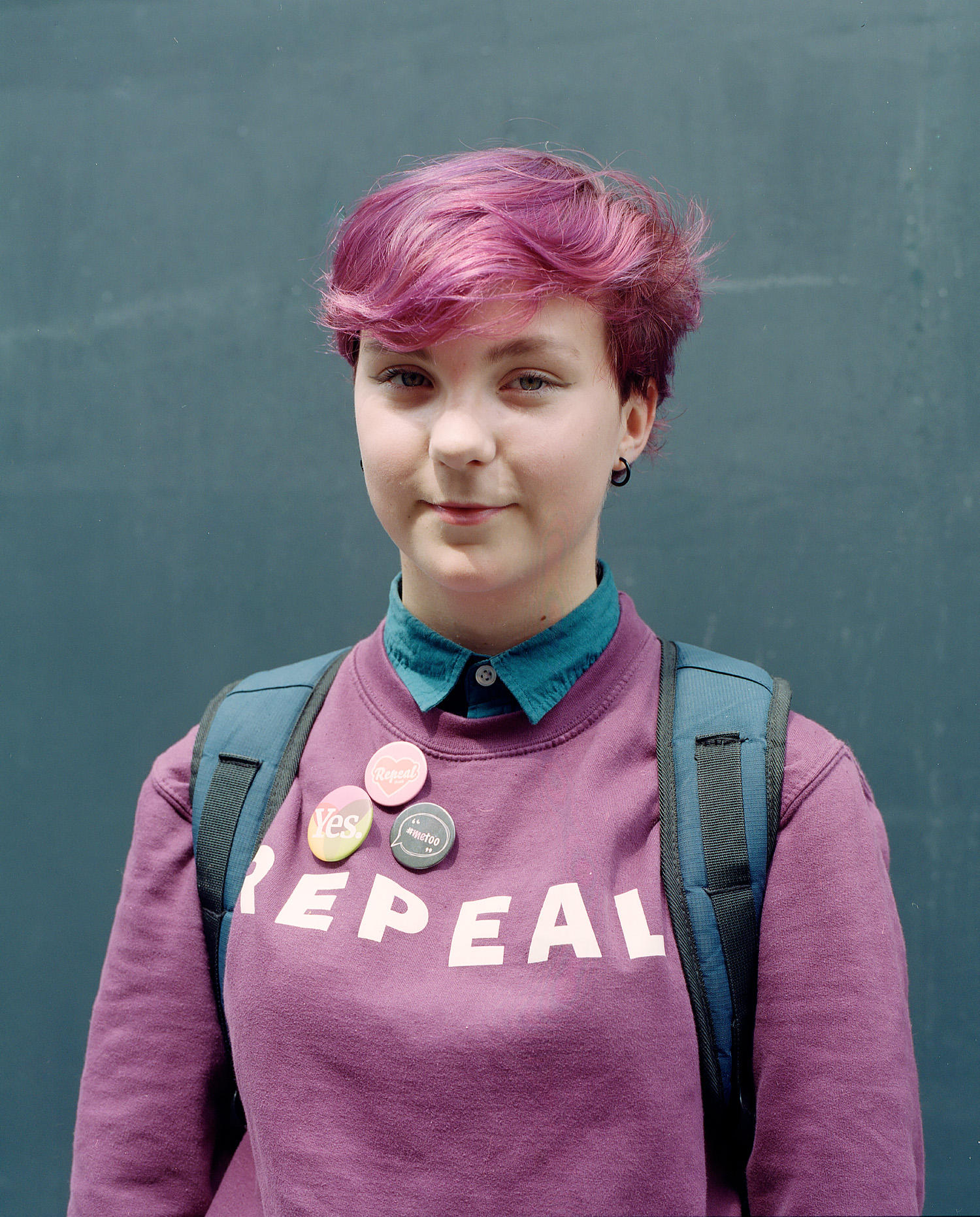Portraits from Ireland’s seismic abortion referendum
- Text by HUCK HQ
- Photography by George Voronov

On Saturday morning, emotions inside the Dublin Count Centre reached an adrenaline-fuelled fever pitch. As groups of Repeal the Eighth campaigners exulted in each new ‘Yes’ poll result, people began to move to quiet corners, in tears and overcome by disbelief. The more emotional were reassured by friends or fellow campaigners, who were all uttering the same words: “we did it.”
No one foresaw the landslide victory by the ‘Yes’ campaign, which on Saturday brought Ireland’s draconian abortion laws to an end. 66.8 per cent of the electorate voted in favour of repealing the eighth amendment of its constitution that made abortion illegal. Perhaps the shock was so great because this was a battle fought predominantly by those who don’t normally win, especially in Ireland – women and the young.
“We’re no longer going to put shame and blame on people,” said a crying Donna Coney, who’s been campaigning and canvassing for Irish reproductive rights for decades. “We’ve told them that we’re equal citizens of this country now. It’s amazing.”


“Since our first constitution in 1932, women in Ireland haven’t had real equality in Irish society. But the Irish people have spoken now. We’ve said that we trust women, that we’re compassionate.”
Long before all the counts were in, it was clear that the country would be waking up to a new order that no one had dared to dream of. By Saturday afternoon it was certain. The record 64.8 per cent turnout proved perhaps what was already felt; that the abortion issue had moved and mobilised the entire country in an unprecedented way.
In Dublin, 77 per cent voted in favour of Yes, and even in the rural areas that had been expected to poll poorly, surprise results kept pouring in. Roscommon, one of two regional areas to come out against the Marriage Referendum in 2015, reported an almost 60 per cent turnout in favour of ‘Yes.’


On the streets of Dublin on Saturday, the national sentiment behind the numbers was clear. Hundreds of people wearing varying forms of ‘Repeal’ and ‘Together For Yes’ clothing walked to and from Dublin Castle (where the results were officially announced), with chants erupting spontaneously amid blaring car horns.
Across town, people left flowers, letters, and notes around the mural dedicated to the memory of Savita Halappanavar: an Indian dentist who died of septic shock after being denied an abortion. Her death in 2012 is what rekindled the battle for Irish women’s reproductive rights that many had been fighting since 1983, when the war cry wasn’t “repeal” but “I’m against the amendment.” Halappanavar’s mural, stretched across a wall on Dublin’s Richmond street, served as a reminder of the life-or-death stakes of this debate.


Overall, an astonishing 87 per cent of under 25s voted to repeal the eighth amendment – and it’s now clear to many that this result, much like the Marriage Referendum of 2015, signals the dawning of a new era in Ireland. “We’ve come of age and are interested in politics now,” says Mary Hayes, one of the leaders of the student group, UCD For Choice who campaigned in her native Tipperary, and was out on the Dublin streets celebrating.
Judging by the crowds that joined her, it’s clear that Ireland is in the midst of a “youthquake” – a revolution that sees it bidding a long overdue goodbye to its social conservatism and Catholic roots. The phantasm of the “silent” or “shy” conservative Middle Ireland majority has finally been banished. In its stead, it seems like there is a politically savvy body of young, and predominantly female, voters who may lead to changes that Ireland could never have previously dreamed of.





Follow George Voronov on Instagram.
Enjoyed this article? Like Huck on Facebook or follow us on Twitter.
You might like

In photos: Hundreds gather outside court to protest Kneecap terror charge
‘Free Mo Charah’ — With drums, smoke and applause, protesters greeted the rapper outside court as he was released on unconditional bail.
Written by: Ella Glossop

Green Day’s Billie Joe Armstrong tells ICE to “fuck off” in LA protest video
Saviors — The singer shared the post on Sunday, featuring the band’s recently released song ‘Fuck Off’ as its soundtrack.
Written by: Isaac Muk

A reading of the names of children killed in Gaza lasts over 18 hours
Choose Love — The vigil was held outside of the UK’s Houses of Parliament, with the likes of Steve Coogan, Chris O’Dowd, Nadhia Sawalha and Misan Harriman taking part.
Written by: Isaac Muk

Bohemian FC is more than a football club
Carefree, wherever you may be — With rock star friends, a fierce commitment to Palestinian solidarity and their very own climate justice officer, north Dublin’s fan-owned team make their presence felt far beyond the pitch.
Written by: Tiernan Cannon

Meet the hair-raised radicals of Berlin’s noise punk scene
Powertool — In his new zine, George Nebieridze captures moments of loud rage and quiet intimacy of the German capital’s bands, while exploring the intersections between music, community and anti-establishment politics.
Written by: Miss Rosen

Analogue Appreciation: lullahush
Ithaca — In an ever more digital, online world, we ask our favourite artists about their most cherished pieces of physical culture. Today, it’s Irish retro-futurist lullahush.
Written by: lullahush

